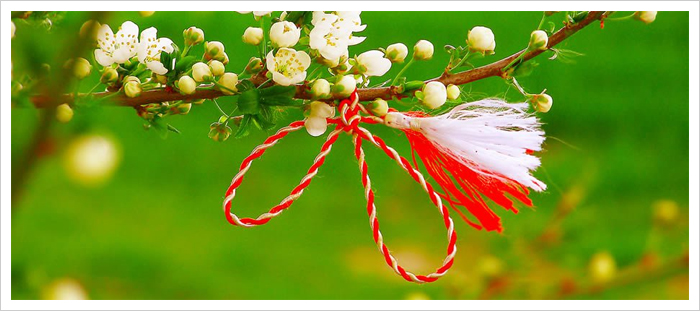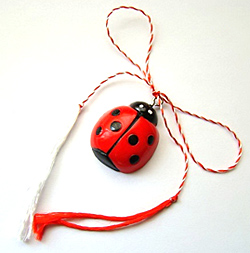
Mărțișor is an old tradition celebrated all over Romania every year, on March 1st.
The name Mărțișor is a diminutive of March (Martie in Romanian).

It is believed that the person who wears the red and white string would enjoy a prosperous and healthy year.
Not long ago, in the countryside, people used to celebrate the Martisor by hanging a red and white string at their the gate, window, cattle's horn and shed to protect against evil spirits and to invoke nature's regenerative power.
In eastern Romania ( Moldova and Bucovina), the red and white string was complemented with a small - gold or silver - coin. After wearing the coin for twelve days, the women would buy fresh cheese with it hoping that their skin would be healthy and beautiful the entire year.
According to archaeological research, the Mărțișor traces its history more than 8,000 years ago. Some ethnologists believe that the Mărțișor celebration has Roman origins, others support the theory that it is an old Dacian tradition.
In ancient Rome, the New Year's was celebrated on the 1st of March.
March ('Martius') was named in the honor of the god Mars. Mars was not only the god of war but also the god of agriculture, which contributes to the rebirth of vegetation.
The Dacians also celebrated the New Year's on the first day of March. Ample spring celebrations were consecrated to this event.
In the old times, Mărțișor were made of small river pebbles, colored in white and red, stringed on a thread and worn around the neck. They were worn, to bring good luck and good weather, from March 1 until the first trees would bloom. When the first trees were flowering the Mărțișor were hanged on tree branches.
Nowadays, on March 1, Romanians buy silky red-white threads (șnur) tied into a bow to which a small trinket is attached and offer them to their (female) family members, friends and colleagues to show friendship, respect or admiration.


